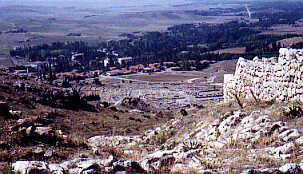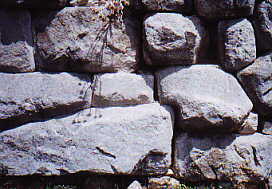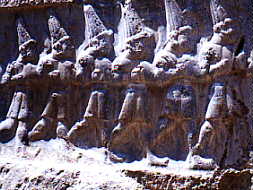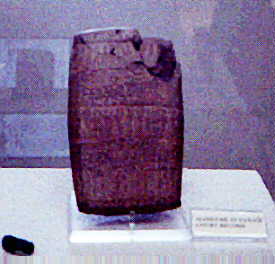
All of the structures in the picture are foundations of a very ancient city. They extend for miles from the top of the hill down to the bottom of the valley. The city was founded around 1800 BC.

The ruins run down to the modern buildings with red tile roofs.
The fertile fields of the valley fed the population of Hattusas (or Hattush), which is estimated to have been over 20,000.
The city temples at the top of the hill were surrounded by a fortress wall.

The stones are carved and fit much like the stones in the South American city of Machuu Pichuu.

These reliefs are carved in a narrow canyon in the hills across the valley from the city.
They depict many of the Hittite gods and record the notable events of their god/kings.
 The Hittite museum in Ankara has marvelous exhibits of artifacts showing
the Hittites to be astoundingly advanced. They were contemporaries of
ancient Egypt in culture as well as time.
The Hittite museum in Ankara has marvelous exhibits of artifacts showing
the Hittites to be astoundingly advanced. They were contemporaries of
ancient Egypt in culture as well as time.
This is one of over 2,300 cuneiform clay tables recovered from the library at Hattusas. The tablet was inscribed when the clay was wet. It was then baked to preserve it (stone tablets??). The baked tablet was then wrapped in a clay envelope which was inscribed with a description of the contents. The whole was then again baked to preserve the envelope. This piece shows the envelope partially broken open, exposing the tablet inside
In the museum are carved wooden chairs that could rival French provincial furniture. There is also several toys; one a finely crafted horse drawn chariot with wheels that roll.
The exhibit gives one an understanding that ancient civilizations, while being VERY old, were not primitive.